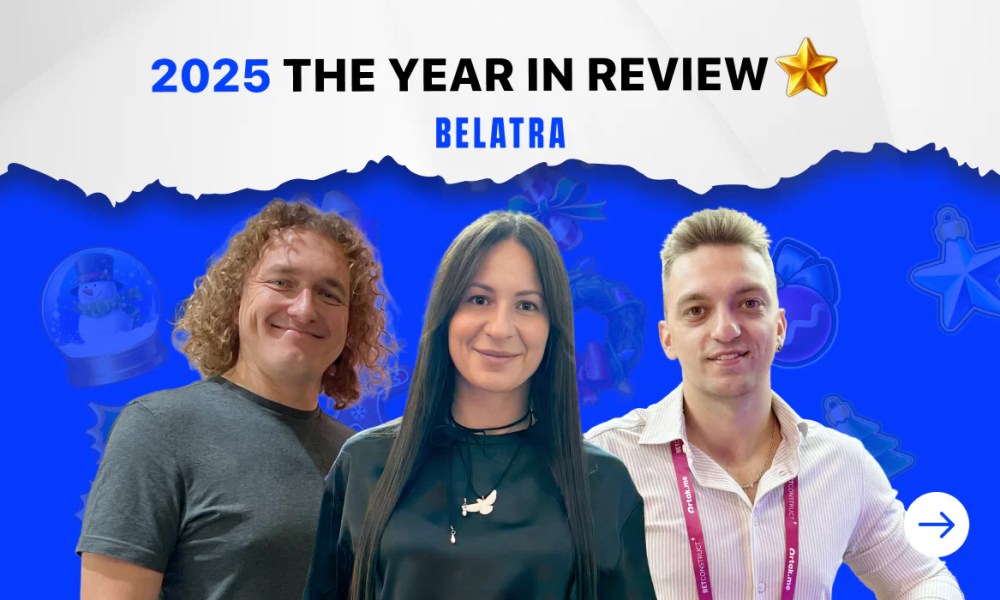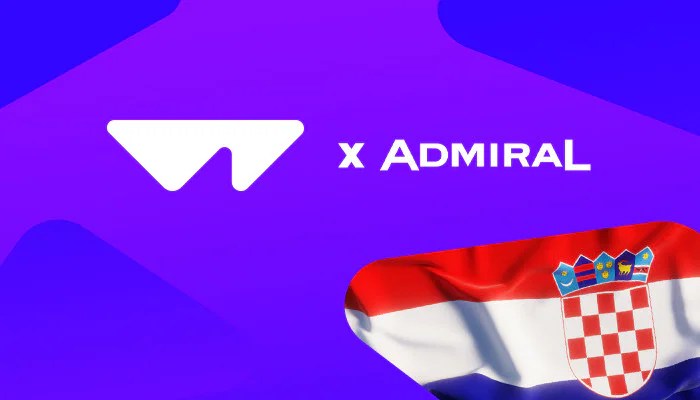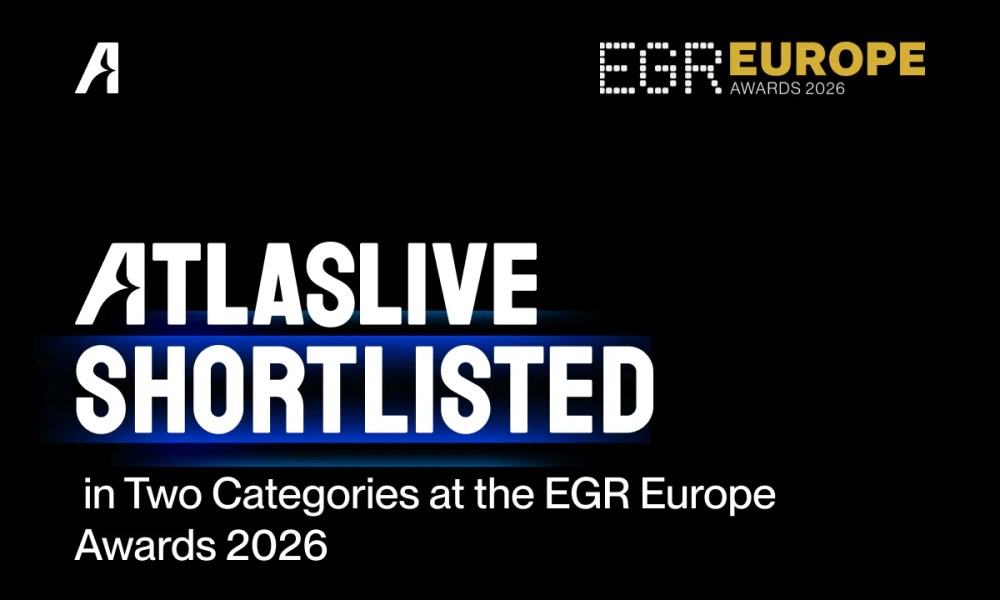Latest News
NSoft’s Betting Terminal BackOffice – an irreplaceable admin tool

 Reading Time: 3 minutes
Reading Time: 3 minutes
The other side of SSBTs: NSoft’s Betting Terminal BackOffice – by Dario Šaravanja, Product Manager at Seven Sportsbook Platform
Self-Service Betting Terminals, or simply SSBTs, are well known in the global betting industry for ages.
With the advancing technology and fresh ideas, SSBTs are constantly upgrading, and the betting operators have recognized their potential.
SSBTs are not just for punters
Betting terminals are considered to be a critical asset for enriching the offering, hence diversifying monetary streams. They are not necessarily bound to the specific premises. This feature makes betting terminals perfect for extensive punter outreach even outside of betting shops.
Having said that, there is one aspect of betting terminals that is often overlooked. We are talking about the administration here: how betting operators keep track of daily operations. In other words, what closes the gap between SSBTs, punters, operators and management? Our answer to that question is Terminal BackOffice, and NSoft’s clients seem to love it.
Closing the gap
Terminal BackOffice, abbreviated as TBO, is an integral part of the NSoft software for betting terminals. It stands as a “behind the scenes” application punters are unaware of, dedicated to making life easy for the operators and management. Think of daily transactions, processed tickets, terminal reports, operator shifts and access cards, terminal’s hardware configuration, maintenance mode, billing information per terminal, balance recovery, and much more. All of those things are part of the terminal back office.
Betting Terminal BackOffice system has been made with all of the users in mind. We improve the system constantly in alignment with the rest of our software solutions and clients’ needs, ensuring nothing is left out.
NSoft’s global expansion confirmed the importance of such functionalities regardless of where the clients come from or where they locate SSBTs. Reasons are various yet mutually shared – common pain points include the complexity of managing terminal operations, diverse hardware, lack of per terminal insight and low sense of managing. TBO tackled those issues by leveraging software solutions for providing insight into each SSBT at any time from anywhere (physically or remotely), providing a supreme sense of management, as well as balancing technical complexity and ease of use.
A must-have for a land-based business
Terminal BackOffice comes with NSoft’s sports betting platform – Seven. The system is independent of the SSBTs’ brands meaning it is robust enough that can be a part of the STARK’s terminals – NSoft’s hardware unit – or any 3rd party terminals running Seven platform.
TBO offers content in accordance with allowed permissions for each operator or manager. This business logic ensures operational safety as responsible managers can neatly set permissions for their personnel from the permission pool.
Content and related actions are visually organized per domain for smooth navigation. Domains include Card Operations, Tickets, Wallet, Billing, Reporting, Options and Settings.
- Card Operations section incorporates management of operator cards and their holders. Cards can be used for faster log-in inside TBO via card readers.
- Tickets section offers the creation of vouchers and a view of processed tickets on the SSBT per each active product, with options to check their statuses, print copies, cancel or pay them out.
- Wallet and Billing domains consist of different wallet types, such as operator and terminal wallets. It is a collection of money flow information, shift management, SSBT transfers and transactions, billing details and billing profit information.
- Reporting provides different types of reports, from profit, balance to turnover. Depending on the nature of the report, data is sorted per product and/or in total.
- Options and Settings wrap up various hardware/software options regarding connected peripheral devices, such as money acceptors, printers and scanners, touchscreen calibration, theme settings, landing page and service mode of betting terminals.
Besides mentioned functionalities, TBO also incorporates the logic of safe balance recoveries after power loss or similar unwanted events.
A reliable system to meet customer-first philosophy
Terminal BackOffice is a backbone of betting operators’ day-to-day business activities when it comes to this channel. The front: flashy design, a wide range of games, simple UX together with the quality hardware is incomplete without a simple management interface. The betting operators, and any business really, nurture the philosophy: customer first. In order to meet this goal, the operator has to have a strong reliable system to keep things run smoothly.

Latest News
From ‘Mummyverse’ to Crash Games: Belatra Reviews a Landmark 2025
Editor’s Take
Why this matters: Belatra has been a steady hand in the slots world for a long time, but 2025 marked a distinct shift in strategy. By entering the Crash vertical with Goose Boom Bang and winning big at SiGMA Africa, the studio is clearly pivoting to capture the high-growth, high-frequency players in emerging markets. They are no longer just a “classic slots” developer; they are diversifying the portfolio to ensure relevance in regions like LatAm and Africa.
The Full Story
Belatra Games, the specialist online slots developer, has issued a strategic review of its 2025 operations, celebrating a 12-month period defined by entry into new game verticals, significant franchise expansion, and high-profile industry recognition.
The year was characterized by a dual strategy: deepening engagement in established markets while aggressively expanding its content portfolio to suit local preferences in emerging territories.
Portfolio Evolution: Crash and Battles 2025 saw Belatra move beyond its traditional slot roots. The company made its debut in the high-demand Crash game vertical with the launch of Goose Boom Bang, a title designed to tap into the fast-paced gameplay preference of younger demographics.
Additionally, the studio introduced a fresh game concept with the launch of Battles, a new format unveiled for the first time in 2025, with further development planned for 2026.
The ‘Mummyverse’ Expands For fans of classic slots, the highlight of the year was the aggressive expansion of the Mummyverse. Belatra nearly doubled the size of this franchise over the year, making it the most extensive game universe in their entire catalog.
The developer also focused on B2B localization, releasing a number of exclusive bespoke games created specifically for selected operator partners to meet specific local market tastes.
Awards and Recognition The company’s strategic shifts were validated by industry accolades. Belatra secured over 30 nominations throughout the year, with standout wins including:
-
Best Slot Provider (awarded by BitStarz).
-
Most Played Game of 2025 for Make It Gold at the SiGMA Africa Awards.
-
Player’s Pick Award.
Management Commentary Misha Voinich, Head of Business Development at Belatra, commented on the studio’s momentum:
“This year has truly defined who we are as a studio – ambitious, creative and focused on building long-term partnerships. We’ve expanded our universes, launched new ones and entered exciting new markets that will all help us carry this momentum into the New Year.”
The post From ‘Mummyverse’ to Crash Games: Belatra Reviews a Landmark 2025 appeared first on Gaming and Gambling Industry Newsroom.
Latest News
‘Chaos and Soul’: Ebaka Games Plots Global Expansion After Viral Launch
Editor’s Take
Why this matters: The “Instant Game” vertical (Crash, Plinko, Mines) is becoming crowded, but Ebaka Games is cutting through the noise with a distinct brand personality. By securing BMM Testlabs certification so quickly after launch, they are signaling to Tier 1 operators that despite their “chaotic” marketing vibe, the math underneath is solid and compliant. The backing of industry veteran Dmitry Belianin also adds immediate commercial credibility to the startup.
The Full Story
Ebaka Games, the fledgling studio that promises to bring “chaos and soul” to the iGaming sector, has outlined an aggressive growth strategy for 2026 following a landmark launch period in late 2025.
The studio, which officially debuted in November, reports that its initial rollout reached more than five million people worldwide. The launch saw its portfolio go live with the operator Menace, serving as the initial testbed for its mechanics and “Ebaka modes.”
The Product: Instant Games with Personality Ebaka is bypassing traditional slots to focus on the high-growth vertical of fast-paced, instant-win games. Their initial lineup includes:
-
Plinko
-
Mines
-
Tower
-
Limbo
-
Crash
Differentiation is achieved through unique mascots and signature gameplay tweaks designed to offer high win potential and distinct visual identities, moving away from the generic interfaces often found in this genre.
Regulatory Milestone Crucially for its 2026 roadmap, Ebaka Games has confirmed it has secured certification from BMM Testlabs. This accreditation validates the fairness and integrity of its RNG (Random Number Generator) and game engines, removing a major barrier to entry for regulated markets. With this certification in hand, the studio plans to launch with a number of “major brands” in the coming year.
Management Commentary Vitalii Zalievskyi, CEO of Ebaka Games, commented on the studio’s unorthodox approach:
“It’s only been a few weeks since we first introduced Ebaka Games to the world. The feedback has been breathtaking, and it vindicates the decision for us to take a different path to the rest of the industry. You don’t need huge marketing budgets to grab people’s attention if you are building something truly innovative.”
Industry Backing The studio describes itself as being “created by players for players” but boasts significant industry firepower in its corner. The team includes Dmitry Belianin, a well-known figure in the sector who is the co-founder of Blask and Menace, as well as Managing Partner at Already Media.
The post ‘Chaos and Soul’: Ebaka Games Plots Global Expansion After Viral Launch appeared first on Gaming and Gambling Industry Newsroom.
Latest News
Racing Meets Nightlife: SBK Backs ARC’s New ‘Friday Night Live’ Series
Editor’s Take
Why this matters: British racing has a well-documented demographic problem; its core audience is aging. “Friday Night Live” is a direct attempt to fix this by blending high-stakes racing with the “experience economy” (DJs, nightlife vibes) that appeals to Gen Z and Millennials. Bringing SBK on board—a mobile-first, app-only sportsbook—is a perfect demographic fit, while the Racing Post adds the necessary credibility to ensure the actual racing product remains the focus.
The Full Story
Arena Racing Company (ARC) has unveiled the strategic commercial lineup for its upcoming Friday Night Live series, confirming SBK as the Exclusive Betting Partner and The Racing Post as the Official Media Partner.
Set to launch in January 2026, Friday Night Live is a new initiative created in collaboration with youth-focused events company INVADES. The series is designed to overhaul the traditional race day experience, featuring fast-paced fixtures under floodlights, DJ sets, and significant entertainment elements sandwiched between races.
The Commercial Deal
-
SBK: As the exclusive betting partner, the Smarkets-owned sportsbook will take naming rights and on-course branding for all 35 races. Crucially, these races will be broadcast live on mainstream television via ITV Racing as well as Sky Sports Research.
-
The Racing Post: As the Official Media Partner, the publication will provide content, coverage, and promotion across its digital platforms, aiming to bridge the gap between established racing purists and the new audience ARC hopes to attract.
A High-Stakes Experiment The series is not just a marketing exercise; it carries serious sporting weight. Each of the five scheduled nights will feature over £200,000 in prize money. The fixtures will rotate across three of ARC’s all-weather tracks: Wolverhampton, Newcastle, and Southwell.
Management Commentary David Leyden Dunbar, Group Director of Commercial Strategy at ARC, was clear about the target audience:
“We have been very clear that one of the aims of Friday Night Live is to engage the next generation of racing fans… Both [partners] have shown real enthusiasm to work with us… as well as using the platform that these fixtures will offer them to also engage with more established racing and sports fans.”
Adam Baylis, Marketing Director at SBK, added:
“Friday Night Live [is] a fresh and engaging concept that brings a new energy to British racing. SBK has always been built around sport… our focus is on enhancing the live race day experience in a fun, social and responsible way.”
The 2026 Schedule The series kicks off immediately in the new year:
-
9th Jan: Wolverhampton
-
6th Feb: Newcastle
-
20th Feb: Southwell
-
20th March: Wolverhampton
-
27th March: Newcastle
The post Racing Meets Nightlife: SBK Backs ARC’s New ‘Friday Night Live’ Series appeared first on Gaming and Gambling Industry Newsroom.
-

 Latest News2 weeks ago
Latest News2 weeks agoSCCG Announces Strategic Partnership with Yellow Elephant Studios to Expand Multi-Channel Gaming Content Worldwide
-
Latest News2 months ago
JioBLAST Launches All Stars vs India powered by Campa Energy: A New Era of Creator-Driven Esports Entertainment
-
eSports1 month ago
CS:GO Betting Gains Momentum in the iGaming Sector
-
Latest News3 weeks ago
THE 2025 PUBG MOBILE GLOBAL CHAMPIONSHIP GROUP STAGE WRAPS UP WITH LAST CHANCE IN SIGHT
-
Latest News1 month ago
S8UL Esports acquires Team Elite’s Free Fire MAX roster to form S8UL Elite
-
Latest News2 months ago
RocketPlay wins Best Customer Service at European iGaming Excellence Awards
-
Latest News2 months ago
Kambi Group plc Q3 2025 Report
-
Latest News3 months ago
GGPoker Unveils Massive Weekly $100K Freeroll, Kicking Off October 18















You must be logged in to post a comment Login